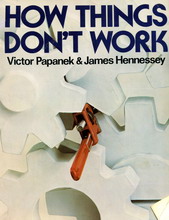
Ulli Diemer — Radical Digressions
Articles Lists
- Selected Articles
- Articles in English
- Articles in French
- Articles in Spanish
- Articles in German
- Articles in Other Languages
- Articles A-Z
- RSS feed
- Subject Index
Selected Topics
- Alternative Media
- Anarchism
- Bullshit
- Capital Punishment
- Censorship
- Chess
- Civil Liberties
- Collective Memory
- Community Organizing
- Consensus Decision-making
- Democratization
- Double Standards
- Drinking Water
- Free Speech
- Guilt
- Health Care
- History
- Identity Politics
- Interviews & Conversations
- Israel/Palestine
- Libertarian Socialism
- Marxism
- Men’s Issues
- Moments
- Monogamy
- Neo-Liberalism
- New Democratic Party (NDP)
- Political Humour/Satire
- Public Safety
- Safe Spaces
- Self-Determination
- Socialism
- Spam
- Revolution
- Trotskyism
Blogs & Notes
- Latest Post
- Notebook 11
- Notebook 10
- Notebook 9
- Notebook 8
- Notebook 7
- Notebook 6
- Notebook 5
- Notebook 4
- Notebook 3
- Notebook 2
- Notebook 1
Compilations & Resources
- Connexions
- Other Voices newsletter
- Seeds of Fire
- Alternative Media List
- Manifestos & Visions
- Marxism page
- Socialism page
- Organizing Resources
- People’s History, Memory, Archives
- Connexions Quotations page
- Sources
- What I’ve been reading
- What I’ve been watching

This book explains how things don't work
By Ulli Diemer
How Things Don't Work
Victor Papanek & James Hennessey
Pantheon Books, $5.75
Reviewed by Ulli Diemer
One of the magic phrases in our society is "standard of living". We never stop hearing that we have "one of the highest standards of living in the world." (How convinced the million-odd unemployed or the several million below the poverty line in this country are, I don't know.)

But now a couple of professional designers have taken a whole new look at this "standard of living", in a book called How Things Don’t Work. In it, they examine some of the possessions which are supposed to add up to our high standard of living. Their message is that a lot of the appliances, tools, and devices of which we're so proud very often are badly designed, prone to break down, and don't satisfactorily do the job they are supposed to do. In short, they don't really work.
In a sense, much what the authors, Victor Papanek and James Hennessey, have to say, isn't really news. We know that most cars are good for the wreckers after a few years of normal use, that TV sets, toasters, stoves, vacuum cleaners, radios, and what not, break down quickly and often aren't worth repairing. We all have highly designed technological junk sitting in our basements, stuff we have no use for, but which we can't bring ourselves to throw out because we don't want to admit to ourselves that we were stupid to buy it in the first place.
But what is different about Papanek and Hennessey is that they don't take this state of affairs for granted. They ask why it's so, and they propose alternatives. They are not willing to accept the way of doing things most of us have been trained to accept. A strong point of the book is that they go into a lot of detail which a review can't do justice to, fascinating information, some of it hilarious, some of it quite useful, about things like toilet bowls, do-it-yourself TV sets, and bottle openers.
But they don't just stop at the details of design. They question the whole set-up that produces inefficient and foolish contraptions so that someone can make a profit, and they make very practical, but radical, suggestions about how to do things differently.
For example, they talk about an idea that spelled common sense to our grandparents, but which suggests "communism" to many today: sharing rather than owning things. Why, they ask, should every house have a power lawn-mower, when it only gets used once every couple of weeks for half an hour? Wouldn't it make more sense for seven or eight neighbours to chip in and buy one together, and all get the use of it when they need it? Doing this would also make it possible to buy a better model which would be less likely to break down than the usual kind. (Incidentally, there is a group in Toronto's Ward 7, the Riverdale Tool and Toy Co-op, which is dedicated to this very idea. They can be reached at 463-5914.)
Another avenue which Papanek and Hennessey suggest is that of people building things for themselves from plans or kits. Many items, right up to such complicated things as colour TV sets and pianos, can be bought in kit form for a fraction of the manufactured price. Most of these kits can be put together by technical morons (which most of us are nowadays). Putting things together from a kit also gives the advantage of giving the person doing it a much better understanding of the product, whereas usually we don't know anything about how the machines in our possession work.
From there, they move on to consider whether many of us really need all the products that we buy, and offer us a checklist to decide whether the purchase is necessary, or whether there in a cheaper and more efficient way to meet the need we are trying to fill. For those of us who find a purchase necessary, they develop a list of questions designed to help in deciding what to buy, e.g. "Do you have a need for all the features?", "Does each feature work, or is it just a gimmick?", "Is the product too dependent on a 'System' that may soon be obsolete?". A separate chapter deals with the whys and hows of buying second-hand.
One of the most amusing - but outrageous - parts of the book is the discussion of the role of merchandising in foisting unnecessary, over-packaged, and soon-to-be-obsolete commodities on us. (The pertinent chapters in the book are headed: "No Roast Tonight - the Lights on My Carving Knife Need Realignment" and "Is Your Hi-Fi out of Fashion? Is Your Mink Coat Obsolete?") Here in particular the book goes far beyond any "consumer" guide. As the authors put it, "It is not the intent of this book to merely evaluate existing products. Nader's Raiders and many consumer publications and organizations perform that function. We question whether the product should exist at all, or at least in its present form."
Finally, the authors go on to discuss the larger issues of public
planning and social responsibility. The insanity of our approach
to designing and planning reaches far beyond household items to
architecture and city design, they maintain, producing a world geared
not to our needs, but to the needs of those who profit from foolish
consumption. The conclusion points clearly to the need to ask some
very hard questions about why things are the way they are, and how
they could be different.
Published in Seven News August 1978
Subject Headings
Design -
Design for Social Need